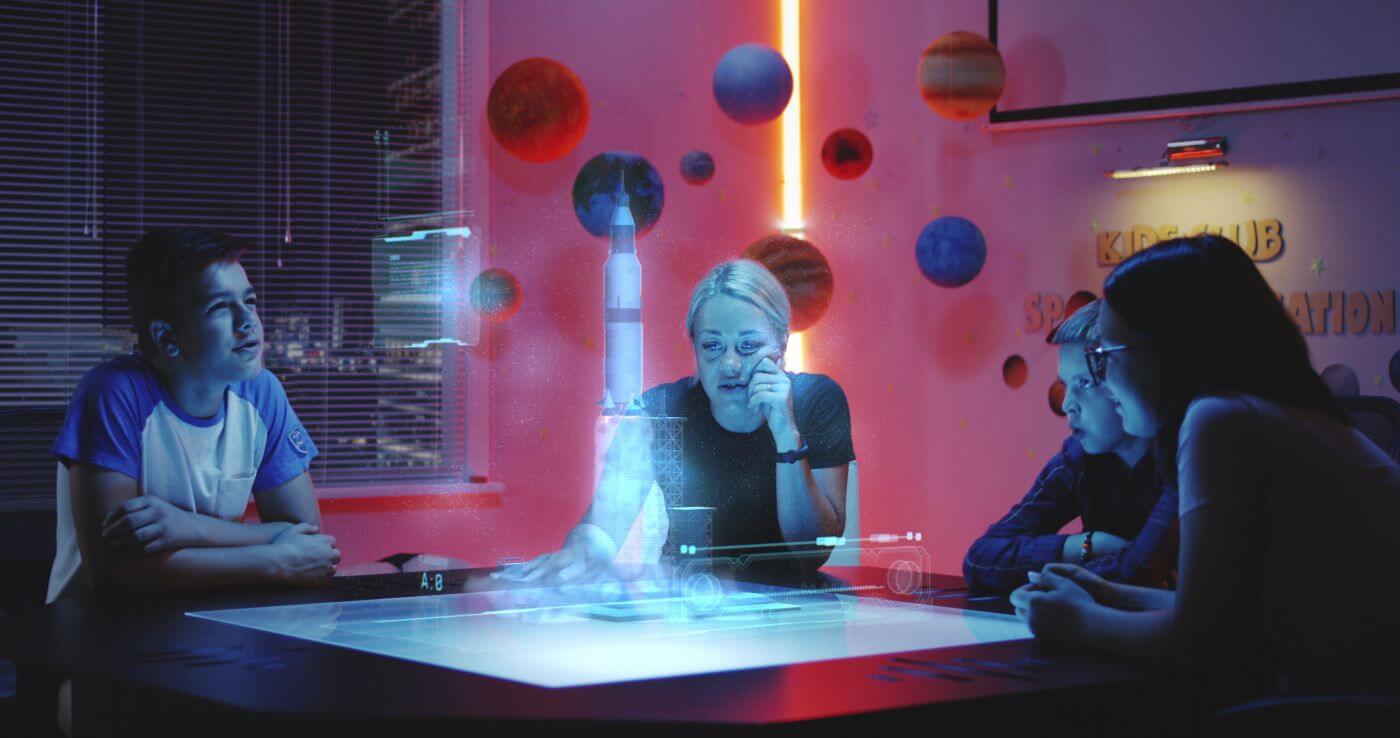Michael Voskoboynik, a forward-thinking educator, has been at the forefront of integrating advanced technologies like Augmented Reality (AR), Virtual Reality (VR), and Artificial Intelligence (AI) into education. We had the opportunity to interview Michael, who recently presented at ISTELive 2024 in Denver, about his journey, his innovative projects, and the impact of immersive technologies on student learning.
Michael Voskoboynik: A Journey in Education and Technology
Michael Voskoboynik serves as the Technology Coordinator and Technology Teacher at the Hasten Hebrew Academy of Indianapolis. His teaching career began in Ukraine, where he taught math before immigrating to the United States in 1992. Upon arriving in the U.S., Michael continued teaching but expanded into technology, developing a deep passion for integrating tech into the classroom.
One of his most impactful projects is the “Virtual Trip to Eastern Europe,” which allows students to explore their family history, particularly during the Holocaust. This innovative project eventually led to the creation of an award-winning interactive Holocaust museum at his school. Michael’s work has garnered international attention, with students presenting their projects at conferences around the globe.
The Introduction of AR in the Classroom
Michael first encountered AR technology while attending various EdTech conferences. His introduction to AR came in the 2010s when he began using Aurasma, one of the pioneering AR platforms. He recalls a memorable project from 2016 in which a photograph of his grandparents’ wedding from 1928 triggered a video of an old-time Jewish wedding when viewed through the AR app.
This early use of AR led to more advanced projects, including the incorporation of Merge Cube and CoSpaces, where students began creating their own content. Michael’s approach has always been to encourage students to be creators, not just consumers, of technology. His students have been engaged in 3D scanning, animating scans, and using platforms like Microsoft 3D Viewer and Adobe Aero to integrate these creations into AR projects.
Integrating AR: A Tool for Engaged Learning
For Michael, AR technology is a powerful tool to create immersive and interactive learning experiences. It helps students visualize complex ideas, engage deeply with the material, and enhance their ability to retain information. He is particularly passionate about the creative possibilities AR offers, allowing students to bring their learning to life in new ways.
In the past three years, Michael and his students have been using AR in a variety of innovative ways. A major turning point came when he discovered MyWebAR at ISTELive 2023. Michael was immediately drawn to the simplicity and effectiveness of the platform. He soon incorporated it into his classroom, allowing students from grades 4 to 8 to create collaborative AR projects, including a joint effort with a partner school in Israel.
Some of the most popular projects include AR Masks, the “Avatar2Gether Book” (a collaborative project with the Israeli school), and a student-created AR book featuring their favorite heroes. Michael’s personal favorite is a 3D avatar he created for a college classmate in Ukraine, complete with Ukrainian colors and music.
Presenting AR at ISTELive 2024
At ISTELive 2024, Michael and his students presented their latest project: “Unleashing Creativity: Generating, Animating, and Coding 3D Student Avatars for Interactive School Projects.” MyWebAR played a central role in their presentation, and the response from attendees was overwhelmingly positive. Many participants were seeing this kind of project for the first time, and the excitement in the room was palpable.
The Impact of AR on Students
Michael’s use of AR has not only met but exceeded his expectations. He has observed increased student engagement, improved understanding of difficult concepts, and heightened enthusiasm for learning. The immersive nature of AR makes learning more interactive and enjoyable, helping students to better retain information. Furthermore, AR has fostered creativity and collaboration among students, allowing them to explore and interact with material in novel ways.
The Future of AR, VR, and AI in Education
Looking ahead, Michael believes that AR and VR are already playing a significant role in education and will continue to grow. He is particularly excited about the potential of combining AR and VR with AI to create even more personalized and transformative learning experiences. According to Michael, these technologies will revolutionize education by making learning more immersive, interactive, and accessible to all.
Conclusion
Michael Voskoboynik’s pioneering work with AR in the classroom is a testament to the transformative power of immersive technologies in education. His projects demonstrate that when students become creators of their own learning experiences, they engage more deeply and learn more effectively. As AR, VR, and AI continue to evolve, educators like Michael will lead the way in shaping the future of education.
